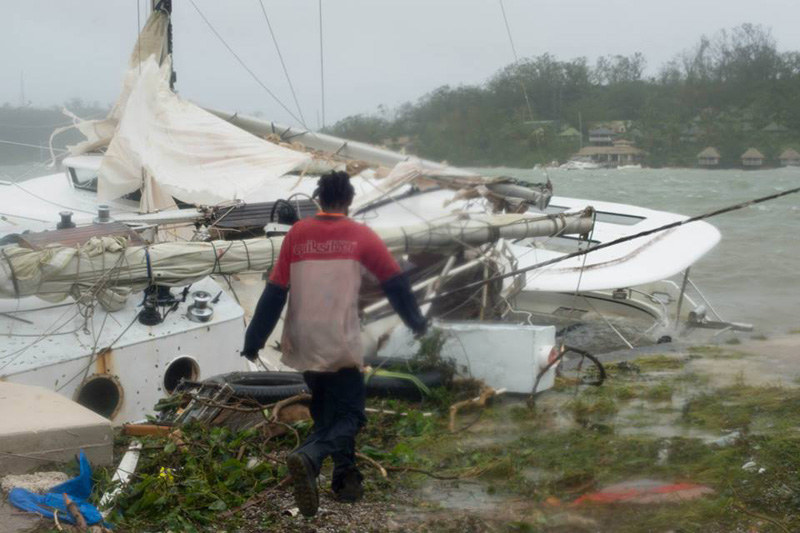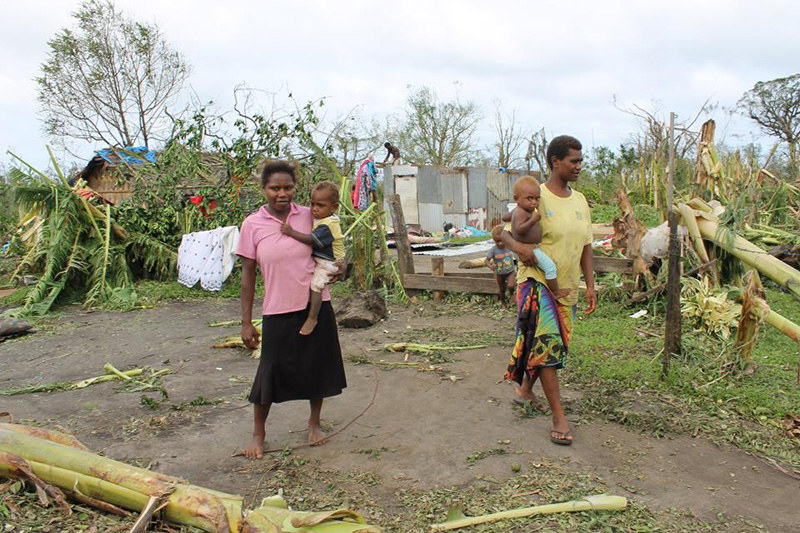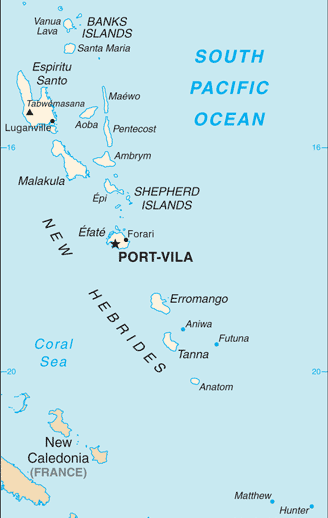
Post-Cyclone Relief Arrives; Sailors Among Dead

Given the reports of sustained winds higher than 150 mph with a 25-ft tidal surge, you might assume the death toll from Friday night’s Category 5 Cyclone Pam would be staggering. But thanks to early warnings that led Vanuatu islanders to seek shelter in the strongest buildings available, the official United Nations’ death count currently remains at only 11 — although that tally will surely rise. Among the dead are at least four (as yet unidentified) sailors whose bodies were found floating in the harbor of Port Vila, the island nation’s capital, according to Guardian Australia. Reports indicate that some visiting yachts may have survived the storm on Port Vila’s so-called cyclone-proof moorings, but as many as 20 broke loose and piled up ashore against port infrastructure.
Although aid workers and relief shipments have been pouring into Port Vila since the weekend, the entire country remains in crisis. The latest reports from sources on the ground there indicate that 90% of Port Vila homes have been destroyed, and as yet there has been no contact with some of the outer islands of the archipelago which are accessible only by boat, other than flyovers by aircraft that revealed destruction of crops and buildings, with islanders signaling for help. Electricity and communications infrastructure are still out throughout the country. Yesterday a BBC correspondent reported that some desperate islanders have resorted to drinking seawater to survive. With most food crops wiped out, livestock killed, and fishing fleets destroyed, experts say it will be months before the normally self-sufficient islanders can produce enough food to feed themselves.

The latest reports indicate that volunteers from various international aid organizations are now distributing drastically needed food and water to residents of Efate Island, where Port Vila is located, and home to roughly 20% of the republic’s total population of 266,000. The island of Tanna, which lies 105 miles south of Efate, is said to have been the hardest hit, as the heart of the massive storm rolled right over the top of it. Aid for its 29,000 people is just starting to arrive there.
Although Vanuatu is considered to be among the world’s poorest nations, with a GDP only a quarter of Fiji’s, it has long been a favorite of cruising sailors, who appreciate its unspoiled waters, intact cultural traditions and minimal development. Bay Area-based cruisers Jim and Kim Coggan spent the past two seasons there (although their Schumacher 40 Auspice is now in Australia). "The people are friendly, generous, industrious and self sufficient," writes Jim. "Their most immediate needs are food, clean water, health care and medicines. The Ni-Vanuatuans, especially those on the remote islands, feed themselves with their highly productive gardens, tropical fruit trees, seafood gathered from the reefs, and fishing. All these resources have been largely destroyed, with the possible exception of their root crops. Their gardens will be replanted as soon as seed is available. But it will be many months before these plants begin to produce. The tropical fruit trees, which have been mostly blown down, will take years to become re-established. Meanwhile the reefs have been severely damaged, and the ability to get out on the water to fish will be extremely limited. To hew out a new dugout canoe takes a month or so.

"Transportation of goods to the outer Islands will be extremely limited. It is unknown if any of the inter-island transport boats are operational, or even afloat. Any cruiser in the region should load up on bulk items of food, milk powder, medicines, seeds, clothing, soaps, flip-flops; as much as your boat can safely carry. Be prepared to help with the repair of outboard motors, generators, refrigeration and solar systems. If a jerry can of petrol can be safely carried, it will likely be the first seen in any village you can get to in many weeks. And don’t expect to find any of this stuff in Pt. Vila or Luganville.
"For those of us in more distant locations, consider making monetary donations. During our time in Vanuatu, we became acquainted with New Zealanders Lynn Chua and David Colbert, who have operated the Butterfly Trust, strictly nonprofit, for several years. These people are the real deal, and completely trustworthy. Their efforts are directed to the remote areas, assisting in health care infrastructure, and facilitating training programs for the locals. We will donate generously." (Contact Butterfly Trust via their main website, their donation site or email here.) Other agencies known to be currently distributing aid on site are CARE Australia, UNICEF, OXFAM Australia and Save the Children.
